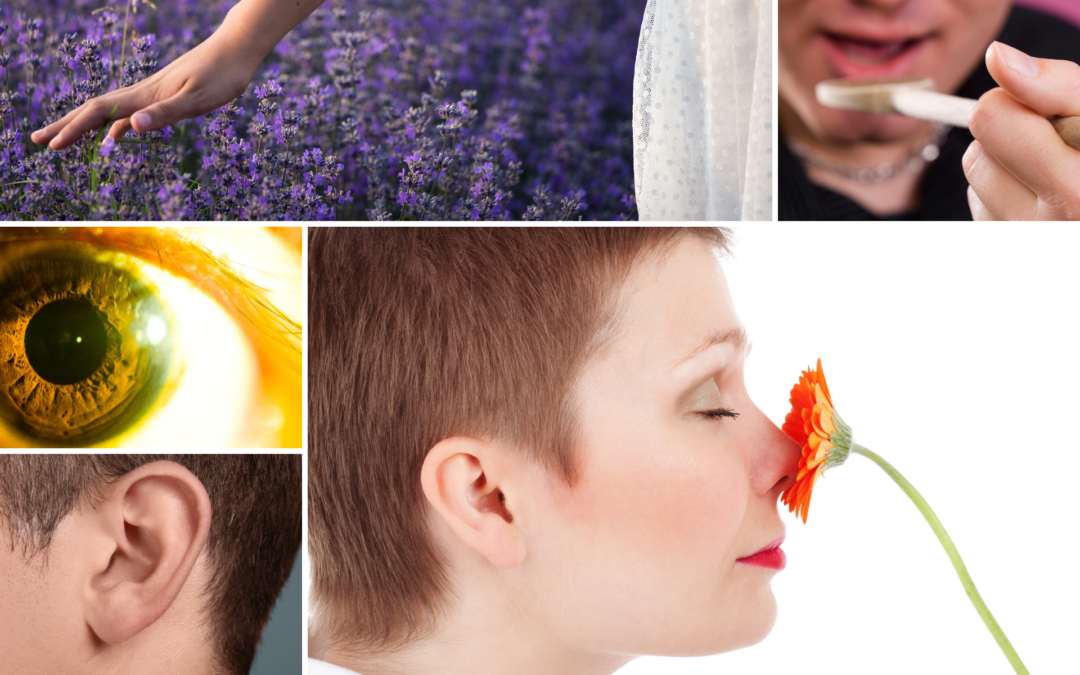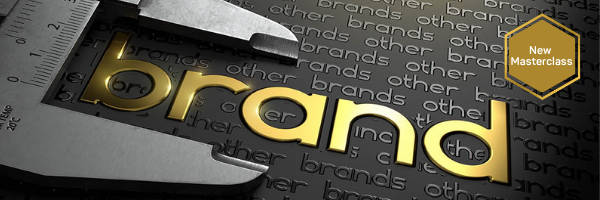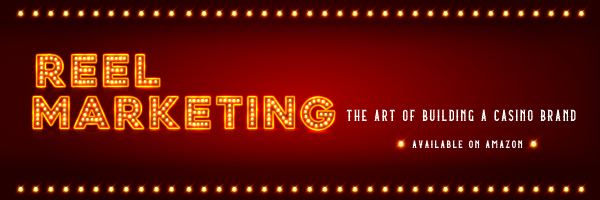In one of the first brand presentations I ever made, I emphasized that while you think your brain makes purchase decisions, it is actually your heart making the decisions. Sensory marketing is the pathway to the heart. It came as no surprise to me that the session on sensory marketing in casinos, presented by New Level Radio Co-founder Nathan Green, was one of our most active during Casino Marketing Boot Camp. Green stressed the importance of sensory marketing in our casino operations, “Obviously casino operators should strive to make the guest experience, within the walls of their property, a prime spot for a ‘life moment.’ A true casino sensory marketing plan for a property can not only enhance the guest and employee experiences but also create additional revenue streams and opportunities.”
Starting the Sensory Journey
Close your eyes, maybe even ask your handy home assistant to play a song. Did you sense something beyond the words and notes? Recall the last time someone passed you, and you got a whiff of their fragrance. Did it conjure a memory of someplace or someone?
This type of experience is the foundation of sensory marketing – using the senses to enhance an experience.
Philip Kotler once predicted that marketing would become less discourse and more of a connection between brands and consumers. His theory of embodied cognition said that our decisions were not based on rationale but rather emotions (brain vs. heart).
By definition, sensory marketing is the utilization of sensory triggers to create an emotional experience. Traditional marketing (in the form of advertising) has leaned into sight and sound, but the other senses of touch, smell, and taste can create the memory triggers that will bond to a customer or guest. The theory is that this type of marketing can increase the chance of your target consumers recognizing your brand and buying your product or service because their emotions have been triggered.
Sensory marketing campaigns – designed to leave your audience with deep feelings of pleasure, satisfaction, or excitement – will trigger those emotions time and time again.
 The Five Senses
The Five Senses
As children, we learn about the five senses, first through experience and then basic science classes.
Sight is likely the most used of the senses in marketing efforts. From well-designed logos to our billboards, ads, and direct mail, there is no denying we know how to do “sight.” However, sight can be the most stimulative of our senses. So, creating the right stimuli is critical.
Consider any 15 minutes of your day and how many things you see. Now think of how many items you remember. The key to a successful connection (to the sense of sight) is to design something with a unique perspective to make consumers notice. Better yet, we must execute this perspective so that when others start copying us, our connection to a guest remains unique and memorable.
Apple does a great job creating a memorable and unique visual experience in their stores (and frankly through all their communications). By using a stark white background, they create a focus on their products that makes you want to touch and experience them (a bonus lead-in to another sense). They could have chosen to sell everything online (like a typical technology company), but they understood that e-commerce would not create a long-term connection to the brand.
Notice the use of colored lighting on your next flight as many airlines have begun using varied light tones during different portions of the flight to guide passenger moods during takeoff and landing.
As previously mentioned, sound is the second sense marketers commonly utilize. It could be as unique as a jingle. For casino operators, the sound of slot machines instantly puts you in the zone to win.
The clang you hear that tells you it’s time for a story ripped from the headlines…Law & Order.
The drop of knowledge that introduces every Ted Talk.
The pop of a Snapple lid.
Ba…da..da..da..da… I’m loving it!
How many of these examples did you hear in your mind as you read it?
BMW amped the engine’s sound in its M5 through the car speakers to enhance the car’s sporty feel, even when the radio is off.
The sound of your brand is the logo that plays itself out in the mind of your customers. Sonic branding might be as critical – if not more – than the logo you develop.
Often considered challenging to embrace, touch can create a memorable experience. It could be the texture of the paper in your direct mail that makes a brand moment. Is the paper stock you chose lightweight and flimsy or heavy with a soft touch you want to keep feeling? How does this decision impact the customer decision process?
Credit card companies have certainly made a statement with the migration from plastic cards to metal. Without an increase in your credit line, you feel like you can afford more.
When the casino industry removed the tactile experience of coins, we replaced it with an enhanced sound experience, but we still left handles on machines for guests to make their lucky pull.
When you cannot provide tactile experiences, you need to work harder to engage the other senses. However, a little creative thinking might be the solution.
As the first digital mattress in a box, Casper’s business model did not include the use of showrooms where consumers typically test mattresses before purchase. As a solution, Casper created the “Casper Dreamery.” For $25, potential customers can slip into silk pajamas and nap with a Casper bed and pillow.
Companies like Cinnabon put their ovens near the door. They know the smell of freshly baked rolls escaping as workers open the oven doors is a siren song. Although casino environments seem to be currently moving to more or enlarged non-smoking areas, smell has been something we have battled for many years. Companies that create environmental smells have been an essential part of any casino operation, retailer establishment, and (now) even health facilities.
In South Korea, Dunkin Donuts played their jingle on buses as an atomizer released the aroma of coffee. They saw a 16% increase in visits to stores near bus stops and a 29% increase in sales at those locations.
As we move more of our communications to digital channels, taste can be a sense that we may easily overlook, but crucial in the hospitality industry. This is why sampling and pop-up restaurants can be valuable. High-end restaurants may offer a complimentary amuse-bouche which can give a diner a small taste of what is to come. Doubletree (our Boot Camp host hotel for 2022) is the gold standard of using taste as a path to building an emotional connection to a product that should not logically be connected to the tastebuds at all.
 Marketing to the Senses
Marketing to the Senses
It is vital to create an atmosphere that stimulates all five senses when guests spend time with us. Green shared simple, affordable ideas any casino marketer can use to enhance the guest experience at their properties.
Sight
As mentioned earlier, the element of sight is ever-present in almost everything we do, from the design of our advertisements to the design of our facilities themselves. Green considers the video wall at the MGM Grand registration area as a great example. The larger-than-life screen highlights anything from music videos to live Twitter feeds to restaurants and activities on properties.
For me, it was my first visit to Hollywood Casino at the Kansas Speedway. The undulating video screens had the look of old film. The content ran over the surface like a classic movie.
This moment has stayed in my memory for nearly ten years.
These examples are undoubtedly capital-intensive, but Green also spotlighted simple things like cleanliness and appropriate lighting as a way of setting the tone for any visit. Once classic casino design leaned more toward a lack of outside views. Today’s approach includes natural light as a design element. These obvious and accessible elements can be just the welcome someone needs to get off to a great visit. The opposite of that positive start quickly happens when guests enter a smokey or darkened area.
The old trick of placing hot paying machines near the casino entrance or placing a large screen progressive where everyone will see it is tried and true tactics because they work! And this old trick even brings in the element of sound, which, when combined with sight, can dramatically increase recall.
Sound
Surprisingly, the first thing that may register with a guest entering your casino will likely be what they hear rather than what they see (or smell). Hearing is the fastest of all the senses. The human brain recognizes sound in 0.05 seconds – 10 times faster than the blink of an eye. “You can understand that when you walk into a facility, whether it’s a restaurant, store, or casino,” says Gren, “what you hear is going to determine what sets the tone for your experience there. Have you ever walked into a restaurant where there was no music at all? Many times people don’t notice what’s playing, but I guarantee you people notice more when there isn’t ambient sound because there’s just kind of that awkward silence of nothing.”
Music is an easily accessible tool any casino marketer can use to create the desired environment.
Green’s New Level Radio team examines the database and demographic information to formulate the ideal soundscape for their clients. He notes that no casino is one-note. Playlists can and should be altered by daypart, by area, and particularly by event.
Green continues, “It seems simplistic in a way, but people really will turn around and walk out if they don’t feel that the music or the sound is speaking to them the way that they feel is applicable. And, yes, music can be extremely subjective. However, if you can take a core fundamental approach of who is in the space, and who you want in the space the most frequently, then you have the opportunity to engage them right off the bat with sound.”
Smell
While the sense of sound may be the fastest, smell is the most sensitive. Green says it is 10,000 times more sensitive than taste because it taps directly into our memories. Scent can immediately take you back to a memory. We have all experienced somebody passing by wearing a particular cologne or perfume, and you immediately think of a memory or loved one.
If you have visited Las Vegas, you have probably seen (or perhaps more appropriately smelled) the flowers of the Bellagio Conservatory or the garden lobby at Wynn Las Vegas. The scent of fresh flowers welcomes you and simultaneously transports you mentally.
Regular visitors to Las Vegas can likely distinguish between properties by the signature scents that perfume the air.
A slot manufacture once tested scent with particular machines, and the scented area showed increased revenue.
But scent can play a less prominent role in ways you may not have considered. One of our Boot Camp participants shared how they are experimenting with scented inks for their invitations. Imagine sending your VIPs an invitation to pick up a gift. Let’s say it is a coffee maker. Now imagine sending them that invitation. Only this time, when they open the envelope, it smells like a fresh pot of coffee. That is the type of moment you always want to create.
Taste
The taste buds certainly can be similar in terms of recall for anyone who has had a previous experience with casino food and beverage outlets. Think about that time you were poolside, and you had a fantastic cocktail that just made your day or the first time you ever went to a fancy restaurant and tried something delicious you had never tasted before. Conversely, maybe you went to a restaurant that was supposed to be incredible but was not to your taste, and how you automatically thought, “It wasn’t worth it.”
Taste is a bit of a merging of senses. Ask a foodie, and they will tell you they eat first with their eyes, then with their sense of smell before anything reaches the taste buds. You have to consider all of these elements if your goal is to create a tasty memory that guests will want to repeat over and over again.
Signature dishes that your team can perfect repeatedly are the easiest way to appeal to the sense of taste, but this does not have to be limited to your high-end restaurant. It can be a signature dish at your snack bar, buffet, or coffee shop. I probably ate my weight in a delicious banana pudding at the Isle of Capri in Lula, Mississippi, when I worked for the company.
Touch
Although we spent a year (2020) figuring out how to limit touch, there are many ways to create memories by touch. From the fabrics we choose to cover furniture, the paper stock we use for our mail, and even vibrating slot chairs, touch can play an essential role in creating a branded experience.
Technological advances like UV light cleaning of chips have presented the opportunity to bring those tactile experiences back.
You can also make everyday decisions, from the weight of the flatware in your dining outlets to the production of players’ cards. The sensation of opening your mail can be memorable or not. It is your choice.
The way that you feel about something will always guide your decision-making process. Whether it is taste, scent, sound, touch, or sight, we must constantly engage guests at a level that will create life moments for them.
The next time you walk into a business, consider what is appealing to your senses and how you can adapt that sensation for your brand.




Recent Comments